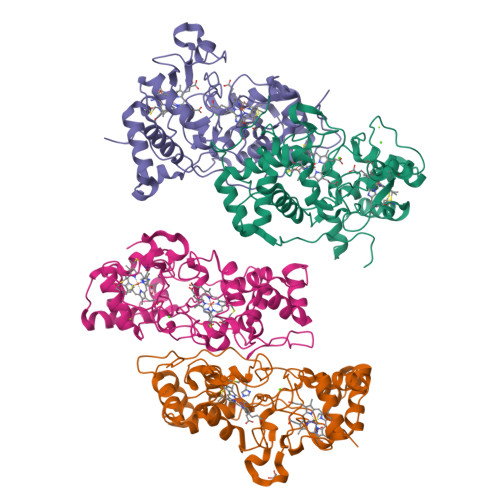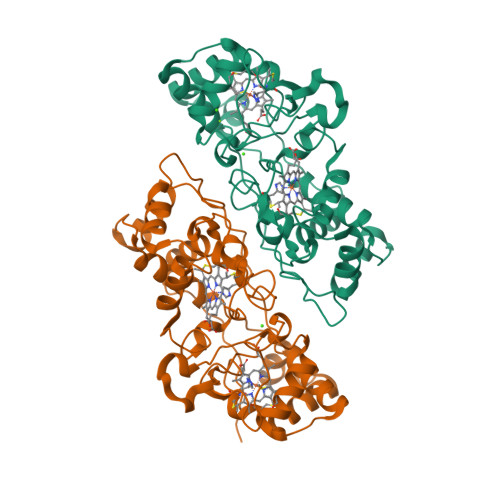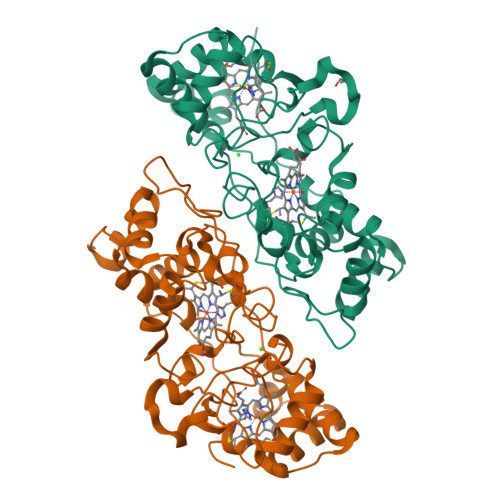Crystal structure of Nitrosomonas europaea cytochrome c peroxidase and the structural basis for ligand switching in bacterial di-heme peroxidases
Shimizu, H., Schuller, D.J., Lanzilotta, W.N., Sundaramoorthy, M., Arciero, D.M., Hooper, A.B., Poulos, T.L.(2001) Biochemistry 40: 13483-13490
- PubMed: 11695895
- DOI: https://doi.org/10.1021/bi011481h
- Primary Citation of Related Structures:
1IQC - PubMed Abstract:
The crystal structure of the fully oxidized di-heme peroxidase from Nitrosomonas europaea has been solved to a resolution of 1.80 A and compared to the closely related enzyme from Pseudomonas aeruginosa. Both enzymes catalyze the peroxide-dependent oxidation of a protein electron donor such as cytochrome c. Electrons enter the enzyme through the high-potential heme followed by electron transfer to the low-potential heme, the site of peroxide activation. Both enzymes form homodimers, each of which folds into two distinct heme domains. Each heme is held in place by thioether bonds between the heme vinyl groups and Cys residues. The high-potential heme in both enzymes has Met and His as axial heme ligands. In the Pseudomonas enzyme, the low-potential heme has two His residues as axial heme ligands [Fulop et al. (1995) Structure 3, 1225-1233]. Since the site of reaction with peroxide is the low-potential heme, then one His ligand must first dissociate. In sharp contrast, the low-potential heme in the Nitrosomonas enzyme already is in the "activated" state with only one His ligand and an open distal axial ligation position available for reaction with peroxide. A comparison between the two enzymes illustrates the range of conformational changes required to activate the Pseudomonas enzyme. This change involves a large motion of a loop containing the dissociable His ligand from the heme pocket to the molecular surface where it forms part of the dimer interface. Since the Nitrosomonas enzyme is in the active state, the structure provides some insights on residues involved in peroxide activation. Most importantly, a Glu residue situated near the peroxide binding site could possibly serve as an acid-base catalytic group required for cleavage of the peroxide O--O bond.
Organizational Affiliation:
Department of Molecular Biology & Biochemistry, University of California, Irvine, California 92697-3900, USA.





















